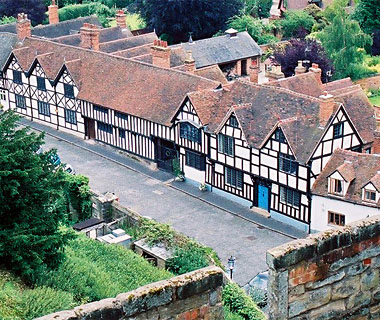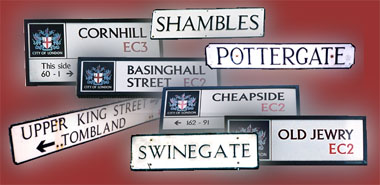
The lower part of Mill Street, Warwick,
as seen from the castle gatehouse
Photo © S. Alsford
The process of reshaping, rebuilding began in the Middle Ages; it is human nature. Yet, apart from the impact of the Dissolution on many of the major religious houses established in the towns, and the notorious case of London whose medieval fabric was devastated by the Great Fire of 1666, the late medieval face of many English towns remained largely unchanged in its broad details down into the eighteenth century, as evidenced by maps (e.g. Worcester) and sketches (e.g. Chester – prospect, Eastgate Street, Bridge Street – and Exeter).
It was during the Victorian era that industrialization and the associated migration from countryside to town, imperialism and an associated rampant commercialization, and a 'progressive' and reforming view of society took their toll. What we would today think of as heritage features were more likely then to be considered eyesores or obstacles, to be 'improved' or swept away.
Much of what remained after that onslaught was lost in the twentieth century, due to the effects of the Second World War or of post-war development as surging population levels and corresponding growth in private and public transportation necessitated major and, sadly, sometimes unthinking urban redevelopment. It is only in the last fifty years that a real commitment to preservation has become embedded in the national pysche, and significant programmes of urban archaeology have been introduced – at a time when major redevelopment of city centres has offered opportunities for investigation.
But, for the most part, the modern perspective that places some emphasis on heritage preservation arrived too late to save above-ground vestiges of the distant past.

Street signs from London, York and Norwich
Photos © S. Alsford
Nonetheless, there are still clues to be found to help us piece together the jigsaw of the past. The names of a good number of streets, for example, preserve indications as to the types of people or even individuals who lived there, prominent structures or other features associated with the street, activities that were carried on there, or other characteristics that tell us something of the medieval town. Although corruption of the original name over time can (as one of the above signs evidences) lead us to false conclusions, if we are not wary.